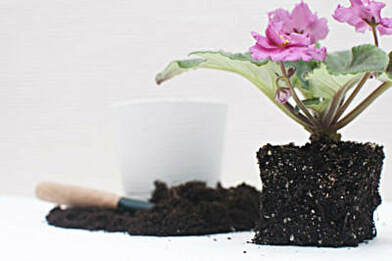
Watering African Violets – Ruth Coulson (Ruth is with the Australian African Violet Association and lives on the Central North Coast of NSW) (Originally published on the African Violets Down Under Facebook page.(www.facebook.com/groups/241227626277942/?fref=nf) This can be a difficult matter for newer growers, and that is why I am discussing it here.
Questions new growers ask include: How much water should I give my plant? How often? Water from the top or the bottom? If I wick water, how thick should the wick be? If I use capillary matting how thick should the matting be and how often should I moisten it? And so on, and so on. We all are aware that too much water can be death to an African violet. They really cannot abide their roots sitting in water for too long. The roots need air and, at the same time, constant moisture. So how to make the potting mix constantly moist, not saturated? Obviously no rule of thumb about amounts of water and timing will suffice since size of plant and pot will vary greatly as will the humidity of the air. Low humidity may mean watering needs to be more frequent. So the answer to the watering question does not depend on the how much, how often or other questions posed above. It depends on the potting mix. The better aerated the potting mix you use, the less likely you are to over water. The larger the granules in the mix the more air it will have, and therefore the better chance the plant has for survival. So if you tend to be a bit heavy handed with the water, just add more medium or even coarse perlite to the potting mix. Unless you actually stand the pot in fairly deep water long term it will be much more difficult to over water. Similarly the thickness or number of wicks you might use in wick watering cannot really be too great. The mix can only hold as much water as the moisture retaining parts of the mix will hold. Extra wicks will not make any difference – so long as the mix is sufficiently open and coarse. This is the trouble-free way to water African violets. And much the best way to control the amount of water available to the roots. |
